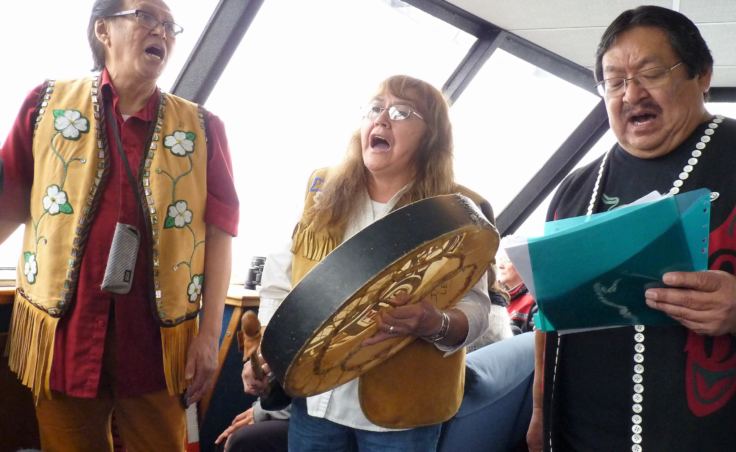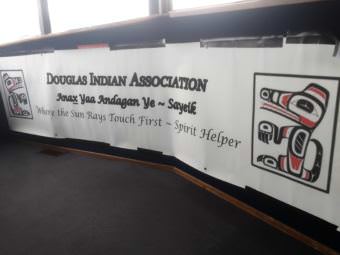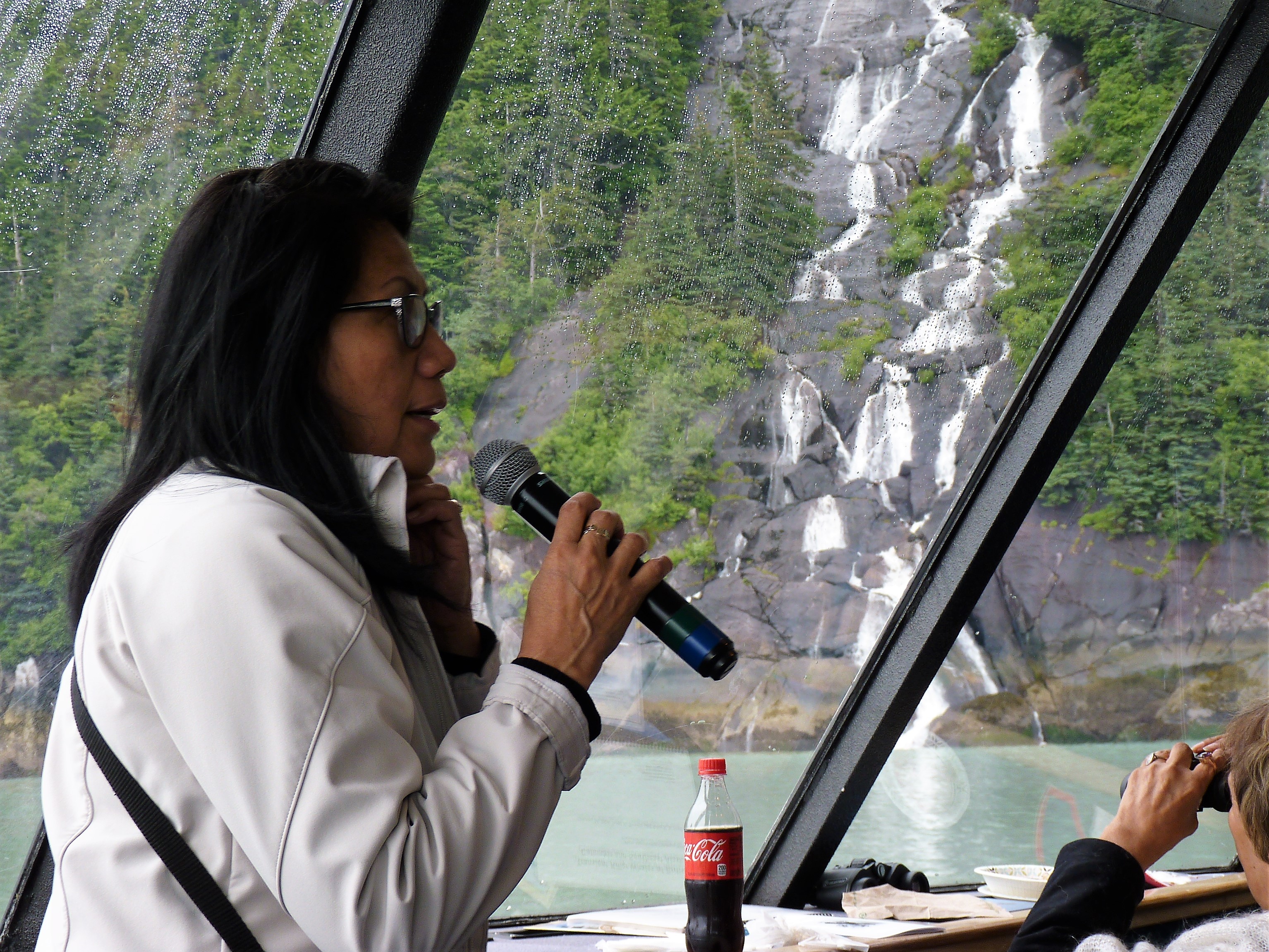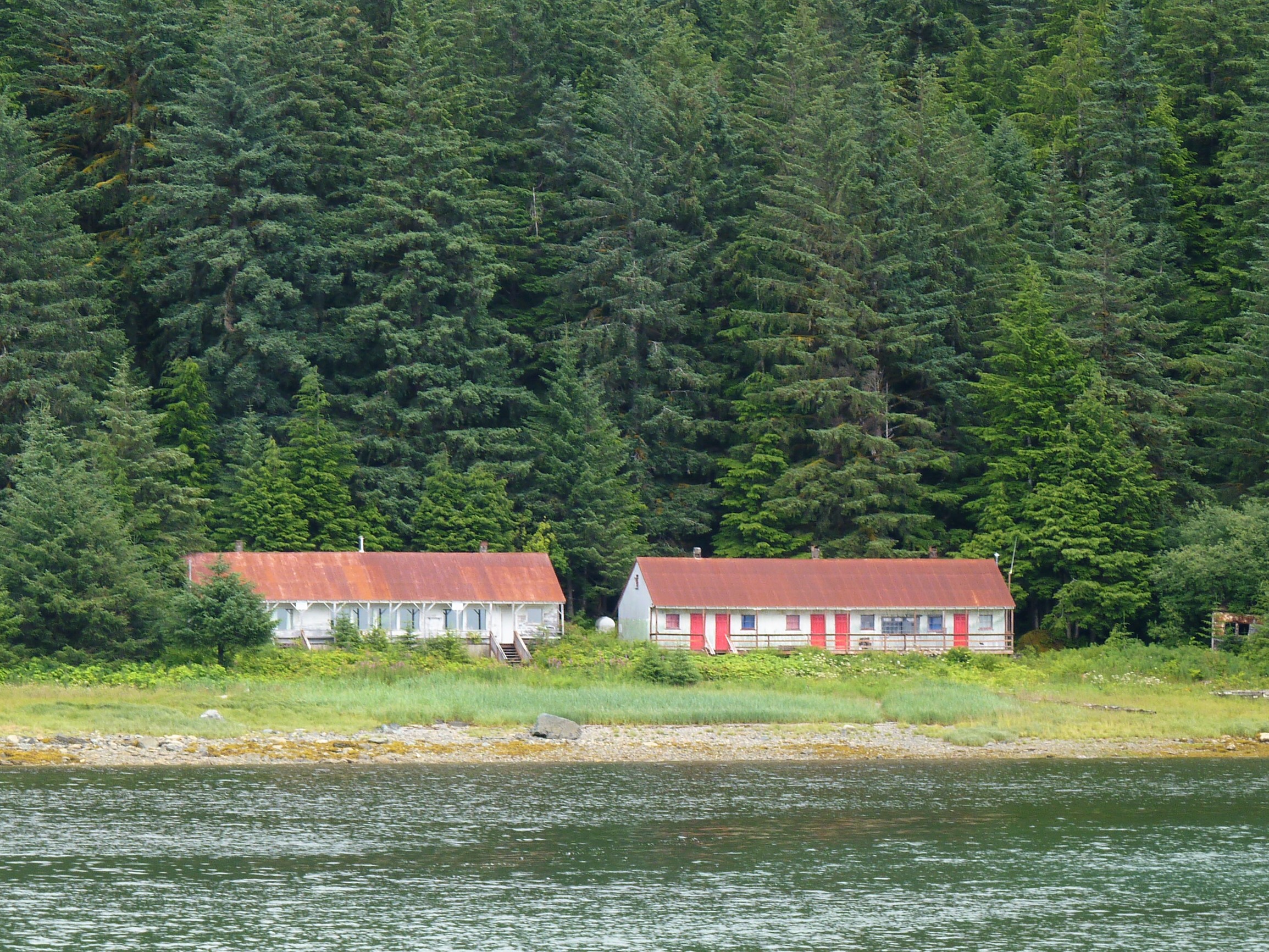
It’s important to know where you come from. But when others make assumptions that are wrong, it’s hard to maintain your identity.
A Southeast Alaska Tlingit tribal government is letting its neighbors know its members come from a vast territory that still bears their names.
The tour boat St. Peter sails around Douglas Island, which is part of Juneau, headed to nearby Taku Inlet.
On board are local and state government officials and members of the Douglas Indian Association, which represents the T’aaḵu Kwáan, the area’s original residents.
At the front of the boat, elders Paul Marks and David Katzeek explain where they are, in Tlingit and English.
“You’re hearing the words and the voices of those who have gone before us on these waters. … And this is how we know today, and we’ve known for thousands of years, that this land belongs to us,” Katzeek translated.
Traditional T’aaḵu Kwáan territory includes the southeast part of Juneau, Taku Inlet, a smaller cove called Taku Harbor and up the Taku River into Canada.
Tribal members, some known as Inland Tlingits, also live in Atlin, British Columbia, almost 80 miles to the north, and Teslin, Yukon Territory, about 60 miles farther.
The association also includes some members of the A’akw Kwáan, whose traditional territory is to the north and west.

Westerners began exploring the area in the late 1800s, and built mines and cities. Taku people lived nearby, but weren’t treated as the original property owners.
They were shut out of traditional lands.
A Tlingit cemetery was later knocked down and paved, to make room for a road and a school. Later, local government burned down their village to build a boat harbor.
Tribal government administrator Andrea Cadiente-Laiti said colonization, disease, limits on fishing and other factors decimated the population.
“We lost everything that was precious to other … federally recognized tribes and that’s land, fishing rights, community, all the way down to sacred sites,” Cadiente-Laiti said.
Some of that’s finally being addressed.
The Douglas Indian Association and Juneau’s Goldbelt Heritage Foundation are working with government officials to recognize and remember the area’s first peoples.
One totem has been carved and raised at the site of Douglas’ Gastineau School. A second pole and memorial are in the works.
University of Alaska Southeast anthropology professor Dan Monteith told the group that it’s important to reconcile, but never forget.
“Hopefully we can make this history a part of the history here that’s no longer repressed, no longer brushed over, no longer ignored,” Monteith said.
The boat motors past Point Arden, where an inlet, a channel and a passage meet.
Katzeek said the competing currents weave the waters, giving them their Tlingit title.
“The name is Kanaasnoo. Everybody say, Kanaasnoo. That is a powerful, powerful word. When you look into hydrology, if there’s any kind of contamination going, this is the place where it would be mixing and it would be sending it out to the other places,” Katzeek said.
The Taku people are particularly worried about pollution from the long-closed Tulsequah Chief Mine, across the border in Canada. Acidic water drains from abandoned tunnels into the mine’s namesake river.
Some studies have shown it does not damage fisheries as it flows into the Taku River, but a recent British Columbia report points to unsafe pollutant levels in some areas.
The Indian association’s John Morris said it’s an issue for all the region’s tribes.

“The Taku, the Stikine, the Unuk, the Alsek, the Chilkoot,” Morris said. “All of our rivers are being threatened by these mining operations that are being proposed in British Columbia.”
Entering Taku Inlet, the boat stops at a steep cliff face for a memorial, and off a cove, for another. There, and in a harbor to the south, speakers point out where the T’aaḵu Kwáan once lived.
Michael Kell, a historical archaeologist for the state, gestures toward an old cannery and the site of a long-abandoned fort. It’s where the area’s Tlingits established one of their many communities.
“We know for a fact that there are summer and winter camps and these camps indicate that people were here and using the land,” Kell said. “That’s the important recognition here, is that the culture has been here and the culture’s still here.”

Old village sites are hard to spot, since most Taku people moved to town decades ago.
Tribal administrator Cadiente-Laiti said many are not part of the Douglas Indian Association. Leaders would like them to join.
“Part of the challenge is to have other government agencies, the powers that be that dictate where and when and how much funding comes to the tribe based on its membership, that it’s not just the tribal member numbers, it’s the area that was traditionally and historically the tribe’s,” Cadiente-Laiti said.
Cadiente-Laiti said more members would increase government grants that fund economic development, environmental protection and youth education.
Ed Schoenfeld is Regional News Director for CoastAlaska, a consortium of public radio stations in Ketchikan, Juneau, Sitka, Petersburg and Wrangell.
He primarily covers Southeast Alaska regional topics, including the state ferry system, transboundary mining, the Tongass National Forest and Native corporations and issues.
He has also worked as a manager, editor and reporter for the Juneau Empire newspaper and Juneau public radio station KTOO. He’s also reported for commercial station KINY in Juneau and public stations KPFA in Berkley, WYSO in Yellow Springs, Ohio, and WUHY in Philadelphia. He’s lived in Alaska since 1979 and is a contributor to Alaska Public Radio Network newscasts, the Northwest (Public Radio) News Network and National Native News. He is a board member of the Alaska Press Club. Originally from Cleveland, Ohio, he lives in Douglas.




